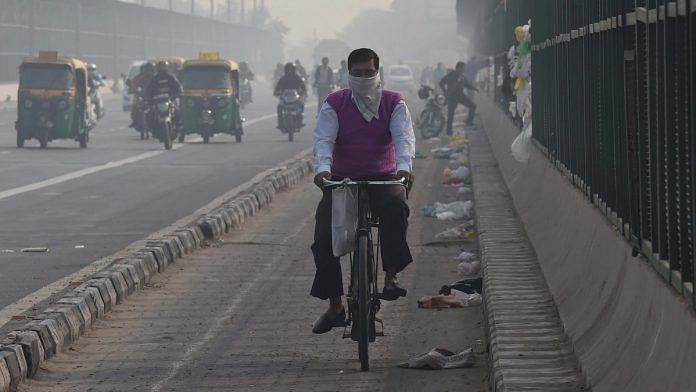New Delhi: A new study has found that air pollution levels in Delhi have dropped by 25 per cent in the past three years. The study also states that the capital city needs to reduce pollution levels by up to 65 per cent in order to meet clean air standards.
Released by the Centre for Science and Environment (CSE), the study is an on-going examination of air quality trends in Delhi and highlights the city’s battle with foul air.
Analysis of annual air quality data submitted by the Central Pollution Control Board (CPCB) to the Parliament shows that the three-year average of PM2.5 levels during 2016-2018 is 25 per cent lower than the 2011-2014 baseline (three-year average).
The study also shows early signs of stabilisation and bend in the pollution curve – more number of ‘clean’ days – as well as change in the pattern of smog episodes.
‘Aggressive action needed’
The stabilisation has been attributed to a multi-sector intervention in reducing vehicular emission and using cleaner fuels, strict measures to control industrial pollution, shutting coal power plants in the city, action against brick kilns and hotspot areas, and dust control measures in construction sites, according to a CSE statement.
“While this level of action has helped in stabilising the problem, much harder decisions and aggressive action is needed to achieve the 65 per cent cut in PM2.5 to meet the clean air targets,” said Anumita Roychowdhury, executive director-research and advocacy, CSE.
Air quality data used for this analysis has been obtained from the CPCB’s online portal “Central Control Room for Air Quality Management – All India” for a period of 2011-2019 (August).
Also read: Modi govt must tackle air pollution by going beyond urban-centric tactics
Lesser episodes of smog
The study includes annual trend, daily trend, hourly trend as well as a 15 minute trend of air quality data. Delhi’s mean AQI has been calculated as the mean of all station working and reporting data for that timestamp. This also includes data submitted by the CPCB to the Parliament.
According to the analysis, PM2.5 concentration shot up 13-14 times in the 24-hour standard during the early years of this decade (2011-14) when pollution control measures were less. During the period, the number of days with severe levels (more than 250 microgramme per cubic metre) of pollution also ranged from 33-52 days during the winter months.
Between 2016 and 2018, the levels were still high due to various meteorological conditions and the PM2.5 levels peaked 7-10 times the standard. The number of days with severe pollution levels comparatively reduced and ranged from 20-34 days during winter.
While severe plus AQI days (more than 300 microgramme per cubic metre) lasted from 20 to 40 days during winter of 2011 to 2014, the number of such days reduced to less than 15 between 2016 and 2019.
Number and frequency of smog episodes has also changed over time. Smog episode is defined as three consecutive days with severe levels of pollution. During the earlier years, smog episodes were frequent and of shorter duration.
In the later years, there have been fewer but mega episodes of longer duration. For instance, during 2016-17 winter, out of total of 23 days with severe pollution levels, 16 were consecutive and continuous – forming a mega smog episode.
This started on 27 October, 2016 when air quality deteriorated to severe plus situation on 30 October (Diwali) and continued till 11 November. During the winter of 2017 and 2018, duration of one smog episode had lasted 6-9 consecutive days. There were roughly 2-3 relatively long smog episodes.
Also read: Amazon forest is reaching its tipping point, world needs to scale solutions



